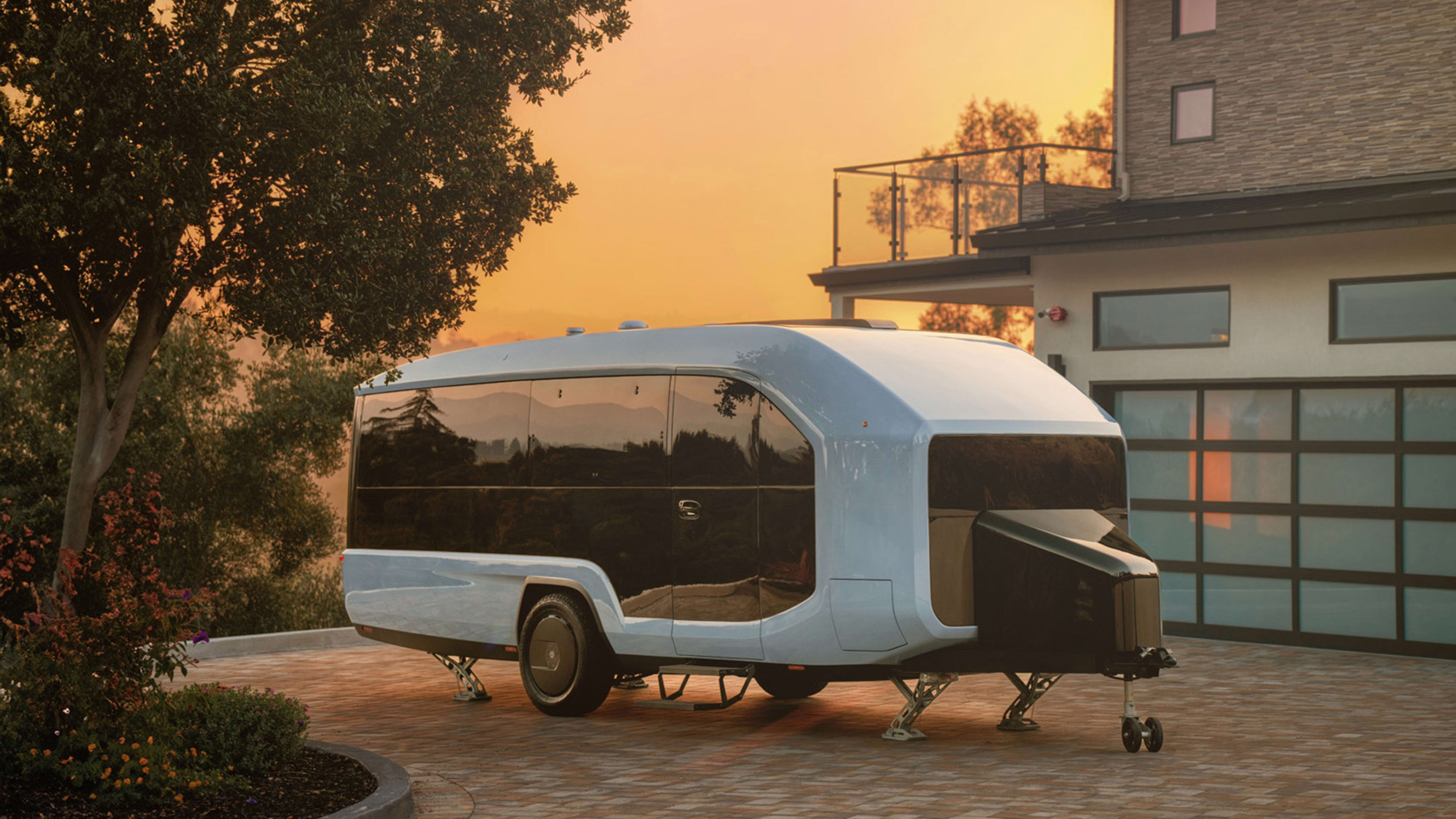If you close your eyes and picture an RV, you probably see one of three things: a shiny space-age vintage Airstream, a battered brown-and-tan 1970s behemoth, or one of those bland white rectangular offerings from the ’90s onward.
Which makes sense. Because RVs haven’t changed all that much over the past five decades, and in an era where many consumers tend to favor sustainable solutions, a good user experience and the latest tech of the day, they’re downright anachronistic. For the startup Pebble (no, not the erstwhile smartwatch company), that presented a design challenge and an opportunity.
“[Traditional RVs] are pretty hard to use—they have a lot of disparate subsystems that all have their own control interfaces, and they’re quite challenging to operate,” says Pebble’s head of design Page Beermann. “They haven’t really come into the modern era yet. So the team just identified that and said, ‘You know what, we have some really clever ideas about how to tackle all of this at once.’”

Today, Pebble is revealing its flagship offering: the all-electric Flow RV. The design is the result of a team that has spent decades in the technology and design world. CEO Bingrui Yang worked on the iPhone at Apple for nearly a decade, and led hardware dev at the autonomous transport companies Cruise and Zoox. CTO Stefan Solyom spent seven years at Apple and 10 at Volvo. Beermann comes from Faraday Future and BMW (and was perhaps uniquely primed for this project, having lived from ages 2–5 in a Volkswagen van with his parents, who were touring the world in it). Over the summer Yang and co. emerged from stealth with $13.6 million in seed and series A funding for the project.

Of course, with its futuristic form factor—including stunning 270-degree wraparound windows—the Pebble Flow looks like the iPhone of RVs. But the team’s larger goal was for it to perform like it, too. To that end, an on-board iPad controls the entire vehicle, and provide a user experience with a logical flow that forgoes the need for an instruction manual. In turn, the team hopes to lower the traditional barriers of entry to the RV world and expand the user base to everyone from vacationers new to the lifestyle to adventuring hybrid workers.

For legacy RV users, Pebble’s advances might seem like the stuff of sci-fi. While we haven’t seen the Flow demoed in person, the 25-foot vehicle is slated to include a 45 kWh LFP battery that can power everything on board. It will have universal charging, including solar charging for a week of off-the-grid power. A self-propulsion system is designed to make towing “safe and effortless.” Its Magic Hitch tech automatically connects the Flow to your vehicle. And finally, its remote control feature is designed to solve one of the most consistent problems for RV users: It allows you to exit your vehicle and back the Flow up into tight parking spots via an app on your phone or the detachable tablet, essentially eliminating the panic attack of doing a 10,000-pound trust fall with whoever is directing you from a side mirror.
“Frankly, it’s insane when you see it work,” Beermann says. “You’re like, ‘Oh, my God, I basically have a gigantic remote control car in front of me.’ You’ve never seen anything like this before. It’s really a true innovation.”
Beyond the improved aerodynamics of the exterior, the inside of the vehicle was designed on an aluminum space frame and with other considerations to cut down on as much weight as possible. Taking a page from the tiny home movement, dual uses and an ample bit of MacGyvering were critical to maximizing space, as seen in the on-board Murphy bed that transitions into a desk, or the fact that the Pebble can be used as a backup emergency power source when parked at home.
One of Beermann’s favorite parts of the design? As a hobby cook, he knows the doldrums of being stuck inside at the stove while everyone is hanging out by a fire, so he designed the inductive cooktop to be removable to work outside.

Collectively, “The user experience is where it’s really going to sing,” Beermann says. “If you compare it to the consumer electronics world, it’s sort of like taking a 20-year leap from one product to the next.”

Will it all actually work as advertised? Find out for yourself when the vehicle debuts at the LA Auto Show from Nov. 17–26. Or, if you want to really take the plunge, you can preorder a Pebble Flow on the startup’s site for $109,000. Currently, Pebble ambitiously plans to start shipping vehicles by the end of 2024.

As the company seeks to take RVs into the 21st century, it’s admittedly easy to feel nostalgic for those streamlined Airstreams, and even those gas-grumbling, road-ravaging brown monsters. But, my god, have you ever tried backing one up?!
Recognize your brand’s excellence by applying to this year’s Brands That Matter Awards before the final deadline, June 7.
Sign up for Brands That Matter notifications here.
